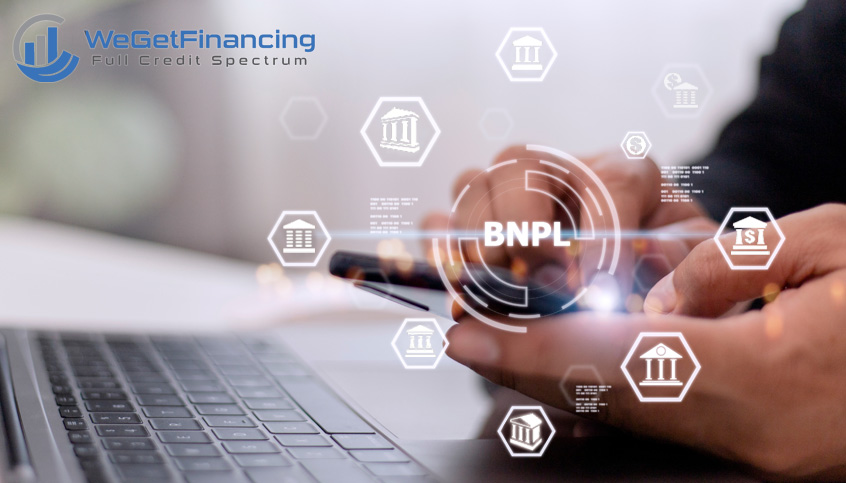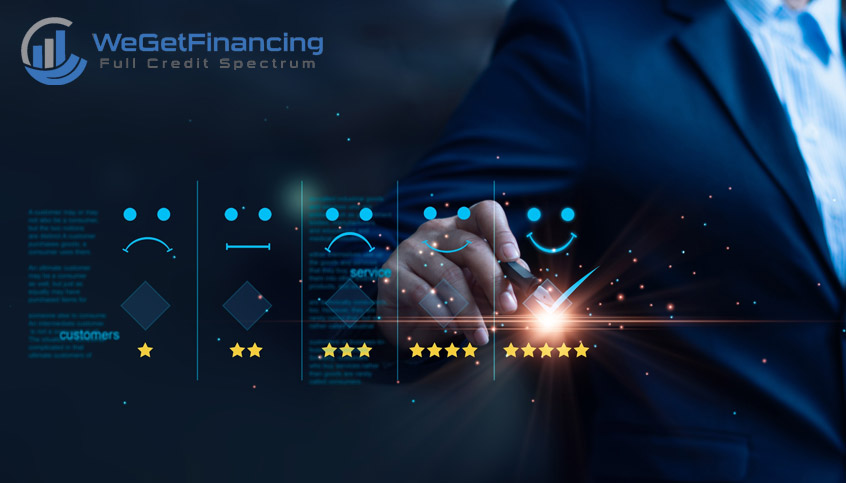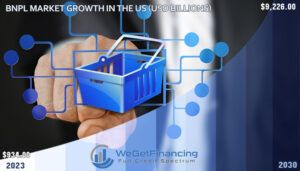In the world of online shopping, convenience is the name of the game. Customers expect a seamless purchasing experience where they can pay quickly and securely. This is why credit card companies have been so successful – they offer a universal payment method that can be used at any store. However, simply having a credit card isn’t always enough to make a purchase, especially for customers with lower credit scores. Consequently, why the Buy Now Pay Later (BNPL) business model has become so popular in recent years.
However, with the rise of point of sale financing and the growing demand for more diverse financing options from consumers, it begs the question: why can’t consumers apply for a multitude of BNPL solutions online with one application form, just like they pay with a credit card at checkout? All in all, with the normalized single-lender approach, consumers apply for BNPL solutions with a specific lender, and if they don’t qualify, they are out of luck. But the good news is that point-of-sale apps like WeGetFinancing change the game by offering a BNPL gateway that leads consumers to an expanding lender network – allowing consumers to obtain instant financing from various lending sources, giving merchants the opportunity to increase average order value, improve customer loyalty, and ultimately a boost their bottom line.
Point Of Sale Financing – A Peak In Time
The concept of Buy Now Pay Later has been around since the 1840s, but it wasn’t until the emergence of department stores in the 20th century that the idea truly took off. Private-label credit cards issued by large retailers like Nordstrom allowed customers to break down large purchases into manageable installments, making it easy for people of all budgets to buy what they wanted. However, managing the finance side of things was a challenge, and it was not until the rise of BNPL fintech startups that the industry saw a new era of growth.
As the popularity of BNPL grew, single-lender solutions became increasingly prevalent. Companies like Klarna and Afterpay offered point-of-sale financing that allowed customers to make purchases at partnering retailers and pay them back over time. However, as the industry continued to expand and demographics/economics began to shift, the limitations of single-lender solutions began to emerge. Many retailers found that average order values were lower with these services, and consumers who had high balances with one lender were often denied access to credit with others. The solution? A redirection towards multi-lender apps. Overall, BNPL solutions have come a long way from their early roots and are now evolving to cater to the changes and ever-evolving needs of consumers.
The Single-Lender Dilemma in BNPL apps
It’s no secret that BNPL apps have become the go-to solution for consumers looking to make purchases on a budget. While this seems like an excellent way to get what you want now and pay later, there are some pressing concerns when it comes to the single-lender BNPL approach in this day and age.
Limited Options
One of the largest cons of single-lender BNPL apps is the limited options. With only one lender at your disposal at a given time, you are limited to their terms and conditions, which may not provide you with the flexibility you need. Single lender solutions lack lender variety, and often isolate consumers in the near and subprime credit range. In short, it may not always be the best fit for you. In addition, poses the risk of you not being approved at all, whereas a multi-lender app gives you alternative solutions. That model gives consumers the confidence to know they’ll instantly get the financing support they need.
Unnecessary Credit Score Hits
Another primary issue with single-lender BNPL solutions is that every application hurts the consumer’s credit score. This is because every time the consumer applies for financing, the lender makes a hard inquiry into their credit report. Multiple hard inquiries can negatively affect the consumer’s credit score, leading to much higher interest rates on any future loans. This is where multi-lender BNPL solutions like WeGetFinancing come in, as this app allows consumers to access multiple lenders through a single application, meaning they only have a hard inquiry into their credit score if they select a lender that requires a credit hit. This helps mitigate the negative impact on their credit score while still allowing consumers to enjoy the benefits of BNPL financing.
Average Order Value
Single-lender BNPL apps can also limit the amount of money consumers are able to spend, as they are often restricted to a specific average order value. This can limit users from making larger purchases, such as furniture or electronics, which means they may have to seek alternative financing options. This lack of flexibility can be a massive disadvantage for consumers who want to invest in larger, more expensive purchases. Single lender BNPL solutions also pose a few other limitations. First time applicants are rarely approved for the maximum approval amount. If a customer already has a loan open with a specific BNPL lender, they cannot open a second loan with another retailer.

Single Lender BNPL Apps vs. Credit Cards
Buy now pay later financing and credit cards are two popular payment options available to consumers today. But both options offer some degree of financial flexibility that can ultimately support responsible budgeting and smarter spending. But while both offer flexibility, they differ in how they work and the benefits they provide.
Credit cards have been a staple in the payment industry for decades, whereas BNPL companies have gained momentum in recent years. BNPL solutions typically offer point of sale financing, where customers can apply to pay in installments without any immediate down payment. On the other hand, credit card companies offer a revolving line of credit that can be used for purchases at any location that accepts the card. In many cases, credit cards incentivize users to carry balances, which, over time, can accumulate interest and hefty fees. These fees can accumulate to a point where paying down credit cards becomes a significant financial burden.
Definitions aside, one significant difference between the two is that BNPL solutions typically have a limit on the amount that can be financed for a single purchase. In contrast, credit cards often have a higher limit, which allows customers to make larger purchases while continuing to use their card for other transactions. However, BNPL solutions offer a more predictable repayment schedule, allowing customers to budget accordingly. Additionally, BNPL solutions cater to customers with lower credit scores who might not fully qualify for a credit card. By offering flexible payment options, BNPL-supported companies can fundamentally increase average order value and drive sales.
A New Era Of Buy Now Pay Later
Many consumers face the pain point of being limited to the credit options provided by a single lender, leading to potential rejection due to their credit profile not lining up with that. Additionally, single-lender applications do not provide the same level of competition for a business. For instance, if a particular lender only caters to borrowers with a certain credit score range, individuals outside that range may find it difficult to secure financing and will miss out on the opportunity to make purchases they otherwise wouldn’t be able to afford. This equates to merchants missing out on closing more sales, improving average order value, and the ability to grow their revenue.
In contrast, multi-lender BNPL solutions, like WeGetFinancing, employ a streamlined process that accommodates the diversity of credit profiles. By collaborating with multiple lending institutions, WeGetFinancing provides consumers with more options, resulting in more approvals and better financing terms. This also benefits merchants who can integrate WeGetFinancing’s dynamic credit service into their checkout process, making it easier for consumers to complete their purchases while increasing the likelihood of securing larger transactions.
In summary, multi-lender BNPL solutions are superior to their single-lender counterparts, unlocking new revenue streams for businesses and improving access to financing for consumers across the board.
In Summary
Consumers are often limited in their options for buy now pay later solutions due to the lack of a streamlined application process. However, with the emergence of multi-lender finance solutions, customers can now apply for various BNPL options with one application form, just like paying with any credit card brand at checkout.
Overall, this is a game-changer for the financing industry, and it provides consumers with the peace of mind and financial flexibility they need, and businesses access to a much larger customer pool. Even more, finally circles back to the roots of why BNPL was popularized in the first place – accessibility and convenience.




